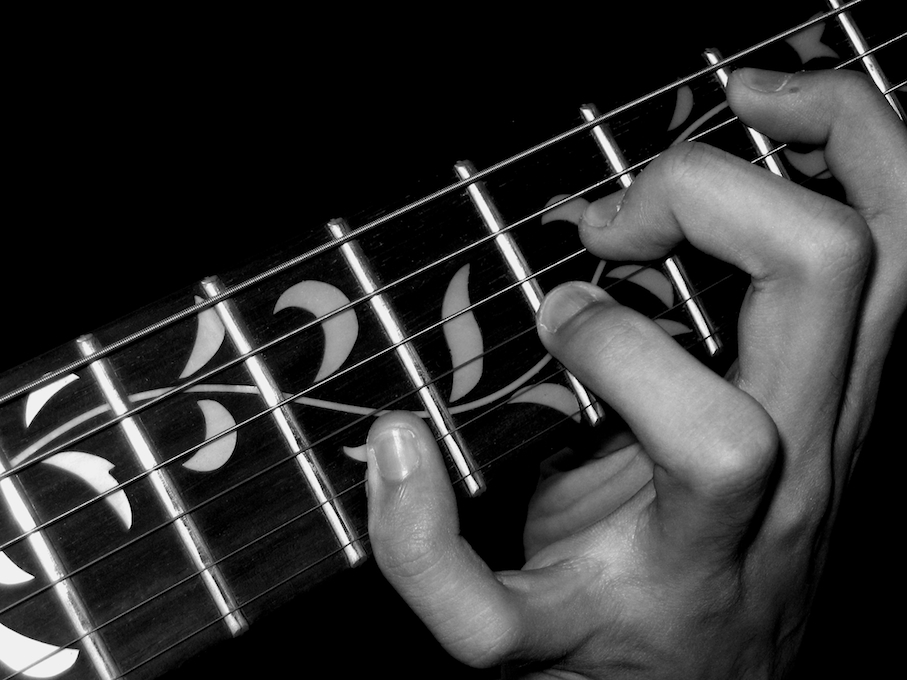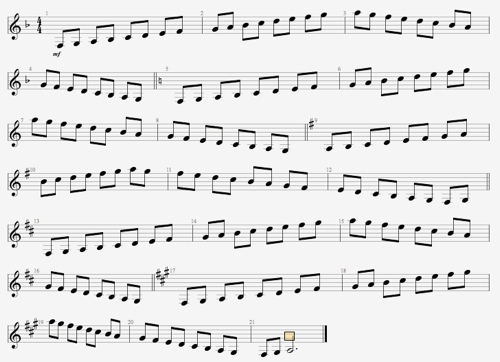
This is the second part of my Major Scale guitar lesson. In part 1, you learned about the Major Scale, how to construct it and how to play it using 7 different positions on the guitar.
In this part 2, we will take a look at William Leavitt’s fingering positions for the Major Scale. For those who don’t know him, he was a jazz guitar player and professor at the Berklee College of Music, where he developed a learning method based on his famous series of books ‘A Modern Method for Guitar’. This 3-volume series presents the guitar fingerings we will explore in this lesson. The prerequisites are the same as for part 1, but this time reading music notation is mandatory.
William Leavitt’s position playing
In his approach for position playing, Leavitt creates positions which cover a 6-fret area, with stretches of fingers 1 and 4. Leavitt’s positions start one fret below your 2nd finger. There are 4 basic types of fingering patterns:
- Type I: uses 1st finger stretches.
- Type II: no finger stretches required for scale tones.
- Type III: no finger stretches.
- Type IV: uses 4th finger stretches.
The idea is that you can play a given scale without moving your hand and, if necessary, play a scale tone away from the ‘comfort zone’ using a 1st or 4th finger stretch. This is better visualized on the guitar, so here are the 4 patterns.
Starting with Type I in C. Note the 1st finger stretches marked as (s) for the out-of-position scale tones. The patterns for ascending and descending Major Scale are shown.

Now pattern Type II in G Major. Notice that there are no finger stretches.

Pattern Type III in D Major. Again, no finger stretches.

And finally, Type IV, with 4th finger stretches for out-of-position scale tones.

Additionally, it is possible to derive 4 more patterns from Type I (I-A, I-B, I-C and I-D) and another 4 from Type IV (IV-A, IV-B, IV-C and IV-D). The most commonly used is Type I-A. With it, you can play a total of 5 Major keys at this same position. Here is Type I-A in the key of F to close this position.

Now you may ask about how this approach performs compared to others. Well, Leavitt’s method was developed for increasing efficiency when sight-reading music notation. The idea is that, if you don’t need to move your hand, then you can concentrate on the reading. Try playing the exercise below, first using the 7 positions learned in the past lesson, then using the 5 Leavitt’s fingering patterns and you will see the difference.

It is much easier to use Leavitt’s fingering patterns, no? Now you may start studying this by constructing all the positions to cover all keys. Remember that for each 5 adjacent Major keys in the Circle of Fifths, there is a position to cover those.
In part 3, we will cover another fingering pattern method, the CAGED system, which is probably the most popular of them all.